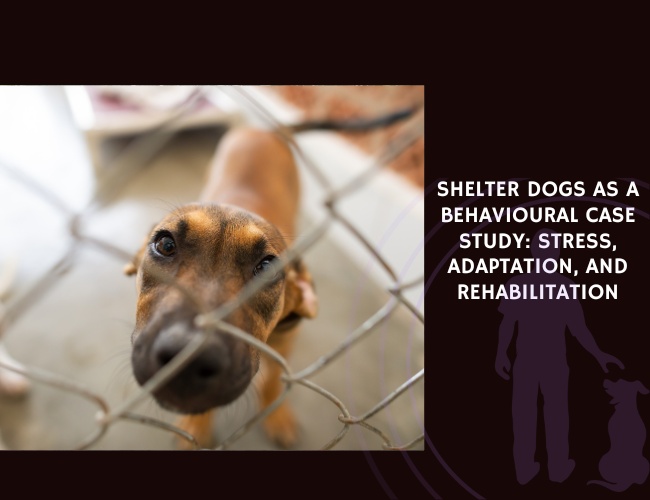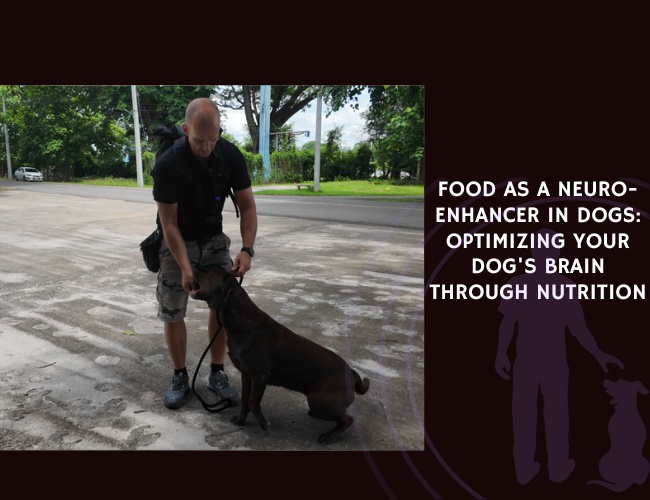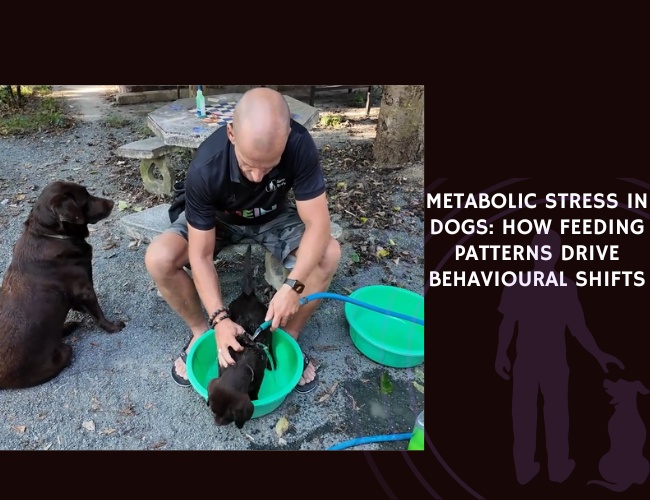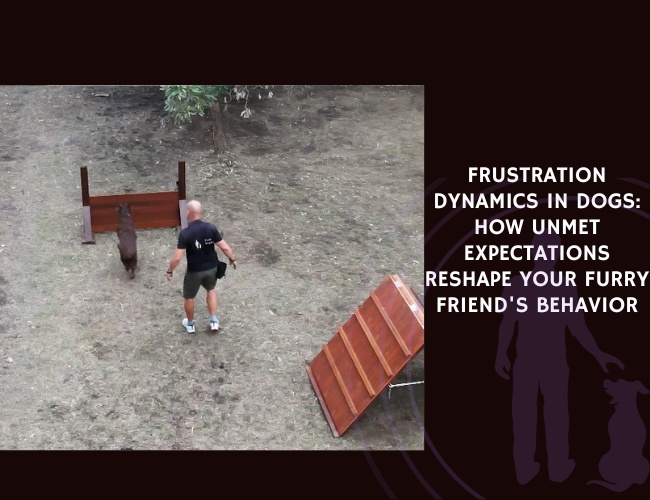Introduction
Have you ever wondered why some dogs bounce back from difficult experiences while others carry emotional scars for years? Just like humans, our canine companions experience trauma differently, and their paths to recovery can vary dramatically. The fascinating world of behavioral resilience in dogs reveals a complex interplay of genetics, neurobiology, and environmental factors that determine whether your furry friend will overcome adversity or struggle with lasting effects.
Understanding behavioral resilience isn’t just academic curiosity—it’s a crucial piece of knowledge that can transform how we care for traumatized dogs. Whether you’re a pet parent helping a rescue dog adjust to their new life, a veterinary professional working with anxious patients, or simply someone who loves dogs, this guide will illuminate the science behind canine trauma recovery and offer practical insights for supporting our four-legged friends through their healing journeys.
Let us guide you through the remarkable mechanisms that allow some dogs to thrive despite adversity, while helping you understand why others need extra support to heal. Together, we’ll explore how genetics shape coping abilities, how the brain processes trauma, and most importantly, how we can create environments that foster resilience in every dog we encounter. 🐾
The Genetic Blueprint: Nature’s Role in Resilience
Understanding Genetic Predispositions
Did you know that your dog’s DNA might hold clues to their ability to recover from trauma? Recent research has uncovered fascinating genetic markers that influence how dogs respond to stressful experiences. Just as some humans are naturally more resilient to life’s challenges, certain dogs carry genetic advantages that help them weather emotional storms.
The resilience genes: Scientists have identified specific genetic regions that correlate with behavioral resilience. In Australian Working Kelpies, for instance, researchers discovered a 3-megabase region on chromosome 3 containing genes related to fear-memory formation and pain perception. These working dogs have been selectively bred for generations to handle intense situations, resulting in genetic signatures that promote emotional stability. This doesn’t mean other dogs can’t be resilient—it simply shows us that genetics provides a starting point, not a final destination.
Epigenetic influences: Beyond the genes themselves, epigenetic factors—changes in gene expression without alterations to DNA—play a crucial role. Research in other animals has shown that trauma can actually modify how genes are expressed, and these changes can sometimes be passed to offspring. In dairy cows, scientists identified over 196,000 differentially methylated cytosines between resilient and susceptible animals, suggesting that environmental experiences literally reshape how genes function. This means that while your dog’s genetics matter, their experiences can actually influence which genes are “turned on” or “turned off.”
Individual variation within breeds: Here’s something that might surprise you: breed alone isn’t a reliable predictor of resilience. While certain breeds have been historically selected for traits that contribute to emotional stability, the variation within breeds is substantial. Your neighbor’s anxious Golden Retriever and your friend’s bombproof Golden might share the same breed heritage, but their individual genetic makeup—and life experiences—create vastly different responses to trauma. This reminds us that every dog deserves to be evaluated as an individual, not just as a representative of their breed.
Neurotransmitter Systems: The Chemical Messengers of Coping
The intricate dance of neurotransmitters in your dog’s brain determines much of their emotional response to trauma. These chemical messengers—serotonin, dopamine, GABA, and others—work together like an orchestra, creating the symphony of your dog’s mood and behavior.
Serotonin’s calming influence: Often called the “happiness chemical,” serotonin helps regulate mood, sleep, and anxiety levels. Dogs with naturally higher serotonin activity often show greater resilience to stress. When trauma disrupts serotonin function, you might notice your dog becoming more anxious, having trouble sleeping, or showing signs of depression. The good news? Many interventions, from medication to lifestyle changes, can help restore healthy serotonin levels.
Dopamine and reward processing: This neurotransmitter drives motivation and reward-seeking behavior. Traumatized dogs often show disrupted dopamine function, which explains why they might lose interest in activities they once loved. A dog who used to leap for joy at the sight of their leash might barely lift their head after experiencing trauma—their dopamine system needs time and support to recover.
GABA: The brain’s brake pedal: Gamma-aminobutyric acid (GABA) acts as the nervous system’s primary inhibitory neurotransmitter, essentially calming overexcited neural activity. Dogs with robust GABA function tend to recover more quickly from frightening experiences because their brains can more effectively “pump the brakes” on fear responses. Understanding this helps explain why some dogs seem naturally more “chill” than others—they literally have better neurological braking systems. 🧠
The Traumatized Brain: Neurological Changes and Recovery
Key Brain Regions in Trauma Processing
When trauma strikes, specific areas of your dog’s brain leap into action—or sometimes, unfortunately, into dysfunction. Understanding these neural command centers helps us appreciate why recovery looks different for every dog.
The amygdala: Fear’s command center: Picture the amygdala as your dog’s internal alarm system. This almond-shaped structure processes emotions, particularly fear and anxiety. In traumatized dogs, the amygdala often becomes hyperactive, sounding false alarms at harmless stimuli. That’s why your rescue dog might panic at the sound of keys jingling—their amygdala is stuck in overdrive, interpreting neutral sounds as threats. Recovery involves gradually teaching this alarm system to recalibrate, distinguishing real dangers from everyday life.
The hippocampus: Memory’s filing cabinet: This seahorse-shaped structure helps form and organize memories. Trauma can actually shrink the hippocampus, making it harder for dogs to properly file away experiences. Instead of neatly categorizing “that one scary incident with fireworks,” the memory bleeds into other experiences, creating generalized anxiety. You might notice your dog becoming fearful of all loud noises, not just fireworks—their hippocampus struggles to keep memories properly sorted.
The prefrontal cortex: The voice of reason: Think of the prefrontal cortex as your dog’s executive decision-maker. It helps regulate emotional responses and make thoughtful choices rather than purely reactive ones. In resilient dogs, this region maintains strong connections with other brain areas, allowing for better emotional regulation. When trauma damages these connections, dogs lose their ability to think through situations calmly—every surprise becomes a crisis requiring immediate fight-or-flight response.
The HPA Axis: Your Dog’s Stress Response System
The hypothalamic-pituitary-adrenal (HPA) axis orchestrates your dog’s entire stress response, and trauma can throw this delicate system completely out of balance. Let’s explore how this biological stress manager works and why some dogs’ systems recover while others remain stuck in alarm mode.
Normal stress response: In healthy dogs, the HPA axis works like a well-oiled machine. Stress triggers the hypothalamus to signal the pituitary gland, which then tells the adrenal glands to release cortisol. Once the threat passes, the system should return to baseline—but trauma can break this elegant feedback loop.
When the system gets stuck: Traumatized dogs often develop HPA axis dysregulation, meaning their stress response either won’t turn on properly or, more commonly, won’t turn off. Imagine a smoke alarm that keeps blaring long after you’ve burnt the toast—exhausting and distressing for everyone involved. Dogs with dysregulated HPA axes might show chronically elevated cortisol levels, leading to anxiety, digestive issues, and immune problems.
The recovery difference: Why do some dogs’ HPA axes normalize while others remain dysregulated? The answer involves a complex interplay of factors. Dogs who experience trauma during critical developmental periods, especially as puppies, often show more persistent HPA dysfunction. Additionally, genetic factors influence how quickly the system can recalibrate. Most encouragingly, appropriate interventions—from environmental modifications to targeted therapies—can help restore healthy HPA function over time.
Neuroplasticity: The Brain’s Remarkable Ability to Heal
Here’s the most hopeful part of our journey through the traumatized brain: neuroplasticity, your dog’s innate capacity to rewire and heal. This isn’t just feel-good optimism—it’s hard science showing us that damaged neural pathways can regenerate and maladaptive patterns can be overwritten.
Creating new neural highways: Every positive experience your traumatized dog has literally builds new neural connections. That gentle hand offering treats during a thunderstorm? It’s constructing a new pathway that says “storms can coincide with good things.” These new connections don’t erase trauma, but they create alternative routes for your dog’s thoughts and emotions to travel.
The role of enrichment: Mental stimulation accelerates neuroplastic changes. Puzzle toys, training exercises, and novel experiences all promote the growth of new neural connections. Think of it like physical therapy for the brain—the more you work those neural muscles, the stronger and more flexible they become. Dogs engaged in regular enrichment activities show measurably better recovery outcomes than those in unstimulating environments.
Time and patience as medicine: Neuroplasticity doesn’t happen overnight. While the brain begins forming new connections immediately, establishing robust new neural pathways takes weeks to months of consistent positive experiences. This explains why your traumatized rescue might show sudden improvements after months of patient work—you’ve finally built enough new neural infrastructure to support healthier responses. 🧡

Environmental Influences: The Power of Nurture
Social Bonds as Emotional Buffers
The relationships in your dog’s life act as powerful shields against trauma’s lasting effects. Whether it’s the bond with you, connections with other dogs, or even relationships with other family pets, these social ties provide crucial emotional scaffolding during recovery.
The human-canine bond: Your presence alone can dramatically reduce your dog’s stress response. Studies show that dogs experiencing stressful situations show lower cortisol levels when their trusted humans are present. You’re not just company—you’re a biological stress regulator. Dogs from adverse backgrounds often show even greater stress reduction in their owner’s presence, having learned to use their human as an emotional safe haven. This explains why your anxious dog might follow you from room to room—you’re their mobile comfort zone.
Canine companionship: Other dogs can provide unique support that humans simply can’t replicate. A confident, well-adjusted dog can model calm behavior for a traumatized companion, showing them through example that the world isn’t always dangerous. Watch how a fearful dog might tentatively follow a brave companion through a doorway they’d never approach alone—this is social learning in action, gradually expanding their comfort zone.
The attachment factor: Interestingly, research has shown that even hand-raised wolves form attachments to human caregivers that buffer stress responses. This suggests that the capacity for social buffering runs deep in canine evolution. Your traumatized dog’s ability to form new attachments, even after betrayal or abandonment, speaks to this profound biological drive for connection—and it’s one of their greatest assets in recovery.
Early Life Experiences: Setting the Resilience Foundation
The first few months of a puppy’s life create a template for how they’ll handle stress throughout their lifetime. Understanding this critical period helps us appreciate why some dogs seem naturally bombproof while others startle at falling leaves.
The socialization window: Between 3 and 14 weeks of age, puppies’ brains are especially plastic, eagerly absorbing information about their world. Puppies who experience gentle, varied stimulation during this period develop more robust stress-coping mechanisms. They learn that novelty isn’t necessarily dangerous, that humans are trustworthy, and that they can navigate challenges successfully. This doesn’t mean older dogs can’t develop resilience—it just means they’re building on a different foundation.
Deprivation’s lasting impact: Puppies raised in impoverished environments—puppy mills, neglectful situations, or severe isolation—miss crucial developmental experiences. Their brains literally develop differently, with smaller hippocampi and altered stress response systems. These dogs often show what professionals call “deprivation syndrome,” struggling with normal stimuli that well-socialized dogs handle easily. Yet even these dogs can improve dramatically with patient, appropriate intervention.
The pandemic puppy phenomenon: The COVID-19 pandemic created an unintended experiment in puppy development. Puppies raised during lockdowns often missed critical socialization opportunities, and we’re now seeing the behavioral consequences. These dogs remind us that resilience isn’t just about avoiding trauma—it’s about building a rich foundation of positive experiences that create emotional flexibility.
Creating Healing Environments
The space where your traumatized dog lives profoundly influences their recovery trajectory. Let’s explore how environmental design can either accelerate healing or inadvertently maintain trauma responses.
Predictability as medicine: Traumatized dogs often feel like their world is chaos—nothing makes sense, danger lurks everywhere. Creating predictable routines provides crucial scaffolding for recovery. Regular meal times, consistent walk schedules, and predictable household patterns tell your dog’s nervous system it’s safe to relax. This isn’t about rigid inflexibility—it’s about creating a reliable framework within which your dog can begin to explore and grow.
Safe spaces and choice: Every traumatized dog needs a sanctuary—a place where they’re never disturbed, never forced to interact, never challenged. This might be a crate with a blanket over it, a corner behind the couch, or a specific room. The key is that your dog chooses when to emerge. This element of control is therapeutic in itself, countering the helplessness that characterizes trauma. Watch how a dog with access to a safe retreat gradually spends less time hiding—security paradoxically promotes bravery.
Enrichment without overwhelming: While stimulation promotes neuroplasticity, too much too soon can retraumatize. The art lies in finding your dog’s “challenge zone”—engaged but not overwhelmed. Start with simple enrichments like snuffle mats or basic puzzle feeders, gradually increasing complexity as your dog shows readiness. Success builds on success, creating an upward spiral of confidence and capability. 🐾
Genetic. Adaptive. Unequal.
Resilience begins in DNA. Some dogs inherit genetic markers that give them a head start in overcoming fear and stress. These built-in advantages create emotional buffers that shape recovery after trauma.
Experience reshapes expression. Epigenetic changes can switch resilience pathways on or off, proving that environment modifies biology. Trauma doesn’t just affect behavior—it can alter how genes themselves function.


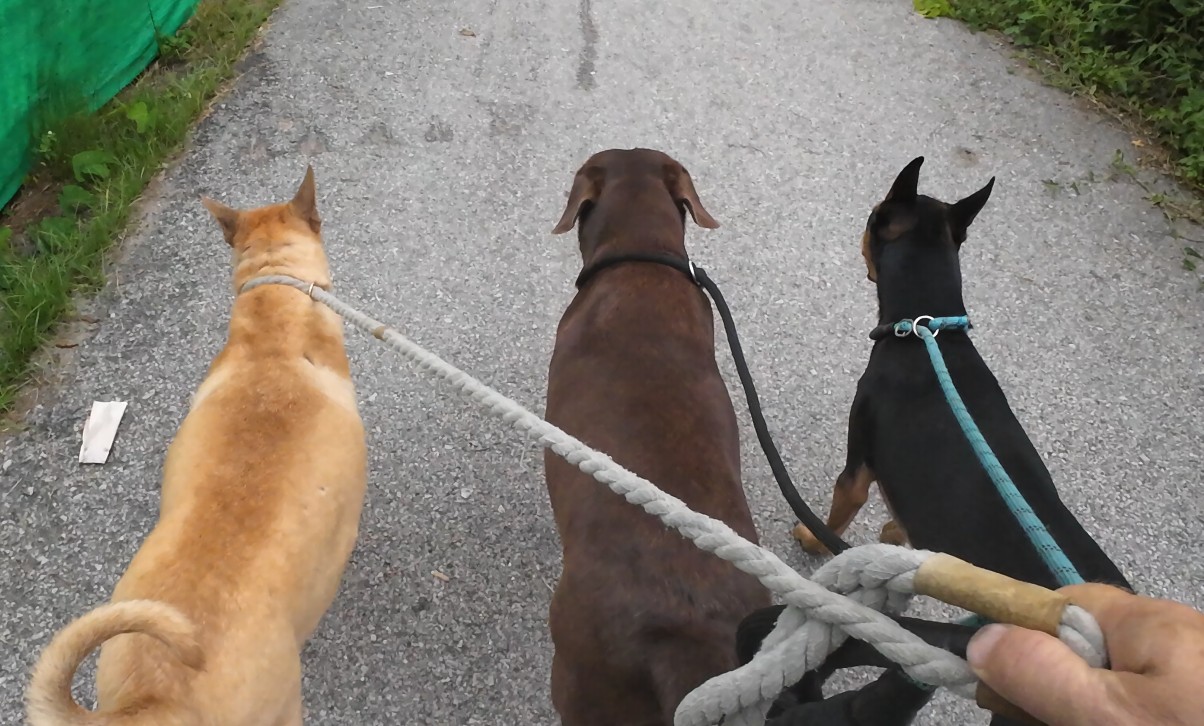
Not all recover the same. While some thrive despite hardship, others carry invisible scars that require extra patience and structured support. Recognizing this difference is the key to true healing.
Training and Rehabilitation: Building Resilience Through Learning
Trust-Based Training Approaches
The way we train traumatized dogs can either compound their trauma or become a pathway to healing. Modern, science-based approaches recognize that trust, not dominance, provides the foundation for true behavioral change.
The relationship comes first: Before any formal training begins, traumatized dogs need to learn that humans are safe and predictable. This might mean weeks of simply sitting quietly near a fearful dog, tossing treats without expecting anything in return. You’re not training behaviors—you’re rebuilding faith in human-canine relationships. Every positive interaction deposits trust in an emotional bank account that trauma has overdrawn.
Positive reinforcement as therapy: Reward-based training does more than teach commands—it literally rewires traumatized brains. Each time your dog makes a choice and receives a reward, dopamine floods their system, strengthening neural pathways associated with confidence and agency. This is why force-free training is especially crucial for traumatized dogs—aversive methods risk reinforcing the neural patterns trauma has already carved.
Reading the individual: Traumatized dogs often communicate differently than their confident counterparts. A tucked tail might not mean defiance—it might mean overwhelming fear. Yawning might signal stress, not boredom. Successful rehabilitation requires learning your individual dog’s communication style and respecting their emotional state. Training sessions should end on success, even if that success is simply your dog taking a treat from your hand.
Behavioral Interventions That Foster Recovery
Specific therapeutic techniques can accelerate recovery when applied thoughtfully and systematically. These aren’t quick fixes—they’re gradual processes that rebuild emotional resilience from the ground up.
Counterconditioning: Rewriting emotional responses: This technique pairs previously frightening stimuli with positive experiences, gradually changing your dog’s emotional association. For instance, a dog terrified of men might receive special treats whenever men appear at a distance. Over time, the sight of men begins to predict good things rather than danger. The key is starting at a distance or intensity where your dog notices but doesn’t panic—their thinking brain must stay online for learning to occur.
Systematic desensitization: Building tolerance gradually: While counterconditioning changes emotions, desensitization reduces reactivity through careful, graduated exposure. Imagine a dog who panics at car rides. Desensitization might begin with simply sitting in a stationary car, then sitting with the engine running, then moving the car a few feet, gradually building up to normal travel. Each step must be comfortable before progressing—pushing too fast can sensitize rather than desensitize.
Choice and control protocols: Giving traumatized dogs agency in their interactions promotes psychological resilience. This might mean teaching a “touch” cue that lets your dog initiate contact, or establishing a “all done” signal that ends interactions. When dogs learn they can influence their environment and escape discomfort, learned helplessness—a hallmark of trauma—begins to fade.
The Human Factor: How Our Behavior Influences Recovery
Your emotional state, training philosophy, and daily interactions profoundly impact your traumatized dog’s recovery. Understanding this influence helps you become a more effective healing partner.
Emotional contagion: Dogs are emotional sponges, absorbing and reflecting human feelings. If you’re anxious about your dog’s anxiety, you create a feedback loop of worry. This doesn’t mean forcing false cheerfulness, but rather cultivating genuine calm confidence. Your regulated nervous system helps regulate your dog’s—you become a living example that the world is manageable.
Consistency across caregivers: Mixed messages confuse traumatized dogs and slow recovery. If one family member uses forceful corrections while another practices positive reinforcement, your dog can’t develop clear expectations. Family meetings to establish consistent approaches aren’t just helpful—they’re essential for recovery. Everyone must understand that traditional “dominance” approaches can retraumatize, while patient, reward-based methods build resilience.
Celebrating small victories: Trauma recovery isn’t linear—there will be setbacks, plateaus, and unexpected triggers. Focusing on tiny improvements maintains hope during difficult periods. Maybe your dog looked at a stranger without cowering, or walked past a trigger with only mild tension. These moments matter. Document progress through videos or journals—on hard days, evidence of improvement provides crucial perspective and motivation. 🧡
Practical Applications: From Theory to Practice
Assessing Resilience Potential
Understanding how to evaluate a dog’s resilience potential helps shelters, rescuers, and adopters make informed decisions that improve outcomes for traumatized dogs.
Behavioral assessment tools: Modern assessment protocols evaluate multiple dimensions of resilience. Tools might measure adaptability (how quickly dogs adjust to new situations), bounce-back speed (recovery time after startling), and social flexibility (ability to form new relationships). These assessments don’t label dogs as “good” or “bad”—they identify individual needs and match dogs with appropriate homes and interventions.
Physiological markers: Beyond behavior, biological measurements provide resilience clues. Cortisol patterns, heart rate variability, and even gut microbiome composition correlate with stress resilience. While not yet standard practice, these biomarkers may soon help identify dogs needing extra support before behavioral problems develop. Imagine knowing a dog’s stress recovery profile before adoption—matching them with families equipped for their specific needs.
The timeline factor: Resilience assessment isn’t a one-time snapshot. Dogs in shelters often show “shutdown” behaviors that mask their true personality, while others display hyperarousal that calms with time. Serial assessments over days or weeks provide a more accurate picture. Foster homes often reveal resilience capacities that shelter environments obscure—another argument for robust foster programs.

Shelter and Veterinary Protocols
How shelters and veterinary clinics approach traumatized dogs can significantly impact recovery trajectories. Trauma-informed care principles are revolutionizing these settings.
Reducing environmental stressors: Simple modifications make enormous differences. Providing visual barriers between kennels reduces stress contagion. Playing classical music or species-specific calming music decreases arousal. Using pheromone diffusers creates chemical comfort. These aren’t luxuries—they’re evidence-based interventions that improve outcomes and reduce euthanasia rates.
Trauma-informed handling: Every interaction becomes an opportunity for healing or retraumatization. Staff trained in trauma-informed approaches recognize that “aggressive” dogs might be terrified, that “stubborn” dogs might be frozen in fear. Low-stress handling techniques—approaching from the side, avoiding looming, respecting distance preferences—prevent further trauma while building trust.
Foster-first philosophies: Some progressive shelters now fast-track traumatized dogs into foster homes rather than maintaining them in kennels. The home environment accelerates recovery, provides better assessment conditions, and frees shelter resources. Foster families receive trauma-informed training and support, becoming therapeutic partners in recovery. The results? Dramatically improved adoption rates and reduced returns.
Supporting Recovery at Home
If you’re caring for a traumatized dog, your home becomes a rehabilitation center. Here’s how to optimize your environment and approach for maximum healing.
The decompression period: Newly adopted traumatized dogs need time to simply exist without expectations. The “3-3-3 rule” suggests three days to decompress, three weeks to learn routines, and three months to feel at home—but traumatized dogs might need longer. Resist the urge to immediately integrate them into normal life. Let them observe, process, and choose their engagement level.
Management before training: Preventing rehearsal of trauma responses is more important than fixing them. Use baby gates to prevent door-rushing. Feed in separate spaces to avoid resource guarding. Walk during quiet hours to minimize triggers. Good management reduces stress while buying time for therapeutic interventions to work. You’re not avoiding problems—you’re creating conditions for successful rehabilitation.
Building a support team: Recovery isn’t a solo journey. Assemble your team: a trauma-informed trainer, a veterinarian familiar with behavioral medication, perhaps a veterinary behaviorist for complex cases. Online communities of people rehabilitating traumatized dogs provide emotional support and practical advice. Remember—seeking help isn’t failure; it’s responsible, compassionate care.
The Future of Resilience: Reducing Euthanasia Through Understanding
Changing Shelter Outcomes
Understanding resilience mechanisms is already transforming shelter practices and saving lives. Dogs once deemed “unadoptable” due to trauma-related behaviors are finding homes through innovative approaches.
Resilience-focused programs: Progressive shelters now design programs specifically for traumatized dogs. Rather than traditional adoption pathways, these dogs enter specialized tracks involving foster care, professional training support, and careful adopter matching. Success rates are encouraging—many dogs written off as hopeless have become beloved family members with appropriate support.
Community-based solutions: Research shows that community economic stress correlates with higher shelter intake and euthanasia rates. Forward-thinking organizations address root causes—providing behavioral support to keep dogs in homes, offering free training for at-risk dogs, creating support networks for struggling owners. Prevention is more effective and humane than crisis intervention.
Education and advocacy: Public understanding of trauma and resilience reduces adoption returns and prevents abandonment. When adopters understand that their dog’s challenging behaviors stem from trauma, not defiance, they’re more likely to seek help rather than surrender. Shelters providing trauma-informed education create more successful adoptions and build community capacity for supporting vulnerable dogs.
Advancing the Science
Research into canine resilience continues evolving, promising even better outcomes for traumatized dogs in the future.
Genetic testing for resilience: While we can’t yet run a simple DNA test for resilience, research is moving in that direction. Identifying genetic markers associated with stress recovery could help breeders make informed decisions and shelters provide targeted support. This isn’t about creating “designer” dogs—it’s about understanding individual needs and capabilities.
Novel therapeutic approaches: Emerging treatments show promise for accelerating trauma recovery. Targeted nutritional interventions supporting neurotransmitter production. Specialized exercise protocols promoting neuroplasticity. Even controlled psychedelic therapies, successful in human PTSD treatment, are being explored for severely traumatized dogs. The future holds possibilities we’re just beginning to imagine.
Technology-assisted rehabilitation: Virtual reality for gradual exposure therapy. Apps tracking stress biomarkers in real-time. AI-powered behavioral analysis identifying subtle progress indicators. Technology won’t replace compassionate human care, but it might amplify our ability to help traumatized dogs heal.
Conclusion: Is Every Dog’s Resilience Journey Unique?
As we reach the end of our exploration into canine behavioral resilience, you might wonder whether there’s a universal formula for helping traumatized dogs recover. The truth is both simple and complex: while the mechanisms of trauma and resilience follow predictable patterns, every dog’s journey is remarkably unique.
We’ve discovered that resilience isn’t a fixed trait but a dynamic capacity influenced by genetics, neurobiology, environment, and relationships. Some dogs carry genetic advantages that promote recovery, while others need extra support to overcome neurobiological vulnerabilities. Early experiences create templates for stress response, but neuroplasticity means it’s never too late for healing. Social bonds buffer trauma’s impact, while appropriate training rebuilds confidence and capability.
Most importantly, we’ve learned that understanding these mechanisms transforms how we approach traumatized dogs. Instead of seeing “problem behaviors,” we recognize trauma responses. Instead of applying one-size-fits-all training, we tailor interventions to individual needs. Instead of giving up on “difficult” dogs, we provide trauma-informed support that facilitates healing.
Your role in the resilience story: Whether you’re adopting a traumatized rescue, working in animal welfare, or simply loving a dog who’s experienced hardship, you’re part of their resilience journey. Your patience during setbacks, celebration of small victories, and commitment to understanding rather than judging makes recovery possible. Every positive interaction contributes to rewiring traumatized brains, every predictable routine builds security, and every choice you offer returns agency stolen by trauma.
The science of resilience gives us hope—not false optimism that every dog will fully recover, but genuine confidence that every dog can improve with appropriate support. Some transformations happen quickly, others unfold over years. Some dogs recover completely, others manage rather than overcome their trauma responses. All deserve our compassion, understanding, and commitment to their wellbeing.
As research advances and our understanding deepens, we’re moving toward a future where fewer dogs suffer trauma’s lasting effects. Where shelters implement trauma-informed protocols automatically. Where veterinary professionals recognize and address psychological alongside physical wounds. Where communities support both dogs and their humans through difficult times.
Your traumatized dog might never be “normal”—but normal is overrated anyway. They might remain sensitive to certain triggers, need ongoing management strategies, or require medication support. That’s okay. Resilience isn’t about becoming invulnerable; it’s about developing capacity to navigate life despite vulnerabilities. In teaching traumatized dogs this lesson, we often learn it ourselves.
The journey from trauma to resilience is rarely linear, never perfect, but always worthwhile. Each small step forward—a tail wag after weeks of tucked tails, a play bow after months of withdrawal, a peaceful sleep after years of hypervigilance—reminds us why this work matters. In helping dogs discover their resilience, we witness the remarkable capacity for healing that exists in every living being. And perhaps that’s the most important lesson of all. 🐾


